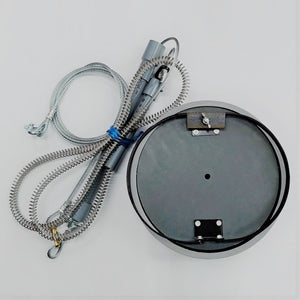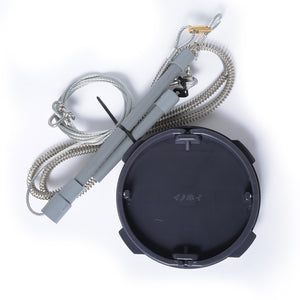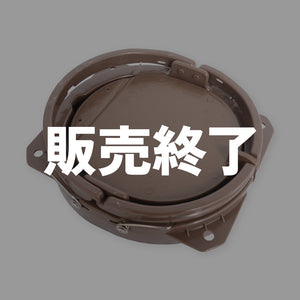In the middle of the hunting season, we receive reports of capture almost every day at our store. On the other hand, accidents during hunting are also reported in the news, etc., and it is also a time when hunters often think about what they should do to hunt safely.
Wild beasts have more physical abilities than humans can imagine, and capturing them is a dangerous act. I would appreciate it if you could once again check the safety considerations for the captors.
Accidents are especially frequent when tying traps.
Every year, hunting accidents occur nationwide. It's easy to imagine serious injuries from gun shots and slips, but the most common of these is when dealing with prey caught in a trap.
A kukuri trap is a trap in which the prey's legs are tied with a wire. If the wire is loosely tied, the leg will come off completely. Also, since life and death are at stake for beasts, they sometimes try to escape by tearing off their own legs.
For example, a boar was caught in a trap that was set, but it seemed difficult to stop it, so I called for a fellow hunter who could use a gun. There is also
Also, wires that are unlikely to be cut by human power can be cut depending on the conditions. There have also been cases of counterattacks when the wire was cut when trying to stop prey caught in a tying trap.
Skilled hunters sometimes use their bare hands to wrestle prey caught in a tying trap and capture it alive, but this is a feat of virtuosity that requires a lot of experience and knowledge, so don't try it easily.
Anyway, don't lick the beast
Bears, of course, but also boars and deer have considerable power if they act violently. Looking at the information published in various places, the following cases have been reported. There is a risk of being injured by biting, scratching, tusks of wild boars, and antlers of deer.
Accidents caused by bears
While hunting wild boars, I was attacked by a mother bear with her cubs. When I fought back with a rifle to protect myself, the mother bear collapsed and crouched down.
When he went to check a hunting trap he had set in the forest, he found a bear in the trap, and the bear bit his arm, breaking his right arm.
While hunting deer and wild boar, he encountered two bears who appeared to be a parent and child, and shot and killed the cub.
Examples of accidents caused by wild boars
As he approached the boar to finish off the trap, the boar's front legs fell off, and he was hit and injured his left thigh.
While patrolling a boar hunting trap, he was bitten by a boar that had been trapped and was dragged about 100 meters. He was rescued after falling into a waterway, but was pronounced dead shortly after.
When I approached a wild boar caught in a trap, it ran wild and escaped, biting off my finger.
I was attacked by a boar that had been entrapped and bit me from the buttocks down to the waist. Immediately after being attacked, I was able to answer, but after that I was unconscious.
Accidents caused by deer
The back of my hand was stabbed with a deer horn that had become a half arrow.
When I tried to exterminate a deer that was entangled in a protective net in a field by myself, I was injured when its antlers stuck in my abdomen.
In particular, there have been many cases of counterattacks by wild boars, and they may exhibit unexpected physical abilities. I also had an experience when I was thinking, "There's a wild boar in the distance," and was approached up close while blinking.
Nationwide, the number of hunting-related accidents remains at around 50 per year, and fatal accidents also occur. In order to avoid accidents, go back to the basics and conduct daily hunting activities with the awareness that you should not lick wild animals.
Tool check is very important
The tool check for gun hunting is a matter of course, and the tool check for trap hunting is also very important. Don't be afraid to replace the parts you use if they are broken or damaged. It might be taken as "you're saying that for the sake of sale, right?" We are here.
What I want to pay particular attention to is the deterioration of the wire. If the wire becomes twisted or kink with use, it runs the risk of breaking due to metal fatigue. At first glance, it doesn't look like it can be cut easily, but it can be cut when it is cut.

The wire is woven with fine strands, and if a strand breaks even a little, the load on the other strands increases and it becomes more and more likely to break. Even if you think, "It's damaged, can I use it a little more?", consider it as a consumable item and replace it with a new one.
In particular, most of the wires that have caught prey once are broken, so do not reuse them. In the case of box traps, it is necessary to check in advance whether the welded part has come off, whether there is any deformation that affects the operation of the door, and whether there is a problem with the stopper that prevents the door from being lifted.
When choosing a place to set a tying trap, consider what happens after the capture.
The most important thing when setting up a trap is to choose a place to set it up. If a beast bites you, try to imagine how you will deal with it while checking the location.
Considering the length of the wire from the position of the support, how far the beast can move, how to approach and how to be present, and if it is necessary to deal with it with a gun, can you secure a backstop? , Check whether there is a risk of ricocheting, and whether the location is permitted to deal with guns in the first place.
If possible, it's a good idea to make arrangements to deal with captured beasts with multiple people, and to ask for reinforcements if necessary.
Nostrils are very useful against wild boars
"Nose tie" is useful when you capture it with a tie trap. If the movement of one leg is restricted, the beast can move about as long as the length of the wire.
Especially in the case of wild boars, there are many accidents due to lunges and bites, so how to restrict the movement of the head becomes important. That's where nose ties come into play. In addition to tying the legs, by tying the nose from the opposite direction with a wire, movement can be considerably restricted, and the safety of the stabbing is greatly improved.
In addition, our nose tie can also be used as a leg tie, so you can switch between them with a single attachment, so if you are interested, please check it out on this page.
summary
In recent years, it has become easy to watch videos of experienced hunters simply stabbing them, so some people may feel that dealing with captured animals is not difficult, but veteran hunters However, the more you get into an accident, the more dangerous it is to capture.
Wild animals can behave in ways that humans cannot predict, so don't overdo it. Let's prioritize safety over unreasonable capture. Thank you for reading to the end.

 箱罠
箱罠
 くくり罠
くくり罠
 パーツ類
パーツ類
 電気柵
電気柵
 自作キット
自作キット
 防獣グッズ
防獣グッズ
 監視カメラ
監視カメラ

![[Explanation step-by-step] From catching wild boars by tying traps to catching them alive](http://inohoi.jp/cdn/shop/articles/inoshishi_1_-min_520x500_520x500_520x500_520x500_4420c9dd-b9d3-4280-ac59-33eb8c1d1501.jpg?v=1759380216&width=750)
![[Must-see for beginners! ] Understand the prohibitions of tying traps and avoid violations](http://inohoi.jp/cdn/shop/articles/2021-09-14T184734.623_520x500_3bf471f0-297d-44cf-94a9-c2cbbadf24a6.jpg?v=1738827745&width=750)
![[Thorough Explanation] What are the characteristics of Kukuri Trap and how to raise results?](http://inohoi.jp/cdn/shop/articles/kukuriwana_1_520x500_ea2f5086-8d8e-48d1-b6d5-7b01ac8ea71a.jpg?v=1738827770&width=750)




![Fare Asahi Shiki Box Trap Big Size [Double Door]](http://inohoi.jp/cdn/shop/products/20180504_5c53af_300x300_crop_center.progressive.jpg?v=1597991101)
![Fare Asahi Shiki Box Trap Big Size [Single Door]](http://inohoi.jp/cdn/shop/products/20180506_c693cd_e969a0f5-abac-49ee-8f2b-6de0f385e3fd_300x300_crop_center.progressive.jpg?v=1597991123)
![Fare Asahishiki box trap medium size [single door] wire mesh specification](http://inohoi.jp/cdn/shop/files/main_300x300_crop_center.progressive.png.jpg?v=1720764665)
![Fare Asahi Shiki Box Trap Medium Size [Single Door] Deep Type](http://inohoi.jp/cdn/shop/files/f9d83dbb4ed93f76265b8cd23c07b474_300x300_crop_center.progressive.jpg?v=1726117508)
 box trap
box trap
 tying trap
tying trap
 enclosure trap
enclosure trap
 Prevention and avoidance goods
Prevention and avoidance goods
 electric fence
electric fence
 trap surveillance camera
trap surveillance camera
 transportation goods
transportation goods
 Trap detection sensor
Trap detection sensor
 hunting supplies
hunting supplies
 hunting books
hunting books
 Anti-bird goods
Anti-bird goods
 Agricultural materials/machinery
Agricultural materials/machinery
 boar
boar
 deer
deer
 Kyon
Kyon
 monkey
monkey
 raccoon
raccoon
 Badger
Badger
 palm civet
palm civet
 raccoon dog
raccoon dog
 nutria
nutria
 mouse or rat
mouse or rat
 Mole
Mole
 bear
bear
 pigeon
pigeon
 Crow
Crow







